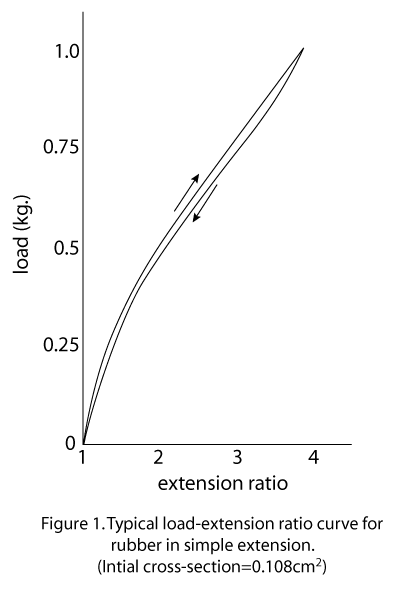Rivlin, Saunders, 1951
Model Status
This is the original unchecked version of the model imported from the previous CellML model repository, 24-Jan-2006.
Model Structure
This is an example of how CellML can be used to describe a material law which models the passive, mechanical behaviour of a material. The material law is to calculate the stress induced in a body when a certain amount of deformation (strain) is imposed on it. The calculated stresses are used to solve a system of equations that govern the mechanics of large deformations. The example presented here is the Mooney-Rivlin constitutive material law, which defines the relationship between eight independent strain components and the stress components.
The Mooney-Rivlin equation was developed by Rivlin and Saunders to describe the deformation of highly elastic bodies which are incompressible (volume is conserved during deformation) and isotropic (the material has the same mechanical properties in all directions at a material point). They formulated the material law as a strain energy function in terms of the first and second principal invariants (quantitative information on the deformation) of the deformation. The formulation is called a strain energy function as the energy is conserved during deformation of these materials under constant temperature. A typical load-extension ratio curve for rubber in simple extension is shown in the figure below.
The model was implemented in a manner that could be used for peforming finite element model simulations on the CMISS software program developed at the Bioengineering Institute, University of Auckland. Examples of how the CellML model is used can be seen here.
The complete original paper reference is cited below:
Large Elastic Deformations of Isotropic Materials VII. Experiments on the Deformation Of Rubber, R. S. Rivlin and D. W. Saunders, 1951, Philosophical Transactions of the Royal Society of London, series A , 243, 251-288. (Full text (HTML) and PDF versions of the article are available on the Philosophical Transactions of the Royal Society of London, series A website.)
 |
| A typical load-extension ration curve for rubber in simple extension (Rivlin, R.S. and Saunders, D.W. 1951) |

